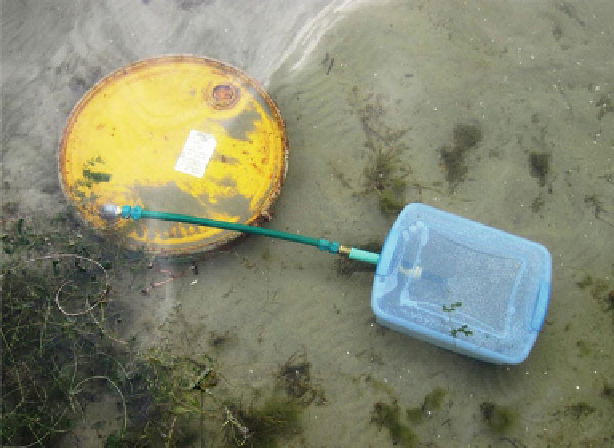Environmental Engineering Reference
In-Depth Information
Fig. 3.25 Half-barrel seepage meter with seepage bag located inside a bag shelter for protection
from currents and waves (Photo by Donald Rosenberry)
where
V
t
1
is the volume contained in the bag at the start of the measurement
period,
V
t
2
is the volume in the bag at the end of the measurement period, and
t
1
and
t
2
arethetimesatthestartandendofthe measurement period. Dividing
that result by the area covered by the seepage cylinder gives seepage flux in length
per time:
Q
A
q
¼
(3.38)
Although conceptually very simple, the device is not necessarily simple to
use. Inferior data have been collected and published, likely because the simplic-
ity and low cost of the meter have resulted in insufficient understanding of
sources of error and attention to measurement commensurate with the cost and
complexity of the instrument. However, given sufficient measurement care, the
half-barrel seepage meter can provide reliable and repeatable data (Rosenberry
et al.
2008
).
Several modifications to the basic design are commonly employed to reduce
measurement error and improve measurement efficiency. Perhaps the most impor-
tant is to place the seepage bag inside of a shelter to minimize the influence of
currents and waves, as shown in Fig.
3.25
. Seepage bags exposed to currents can fill
with water due to velocity-head effects not normally considered by groundwater
scientists (Sebestyen and Schneider
2001
; Rosenberry
2008
). Other modifications

